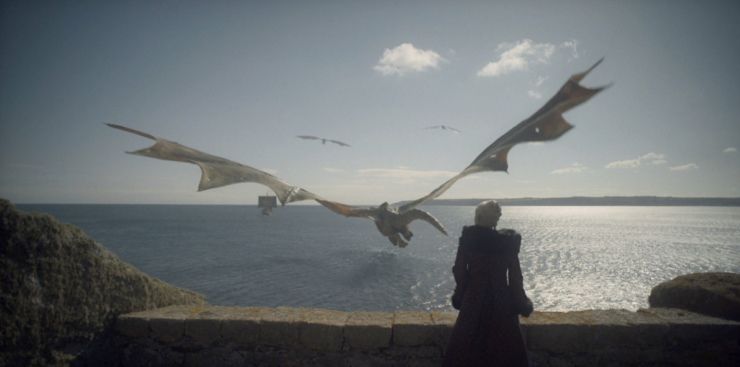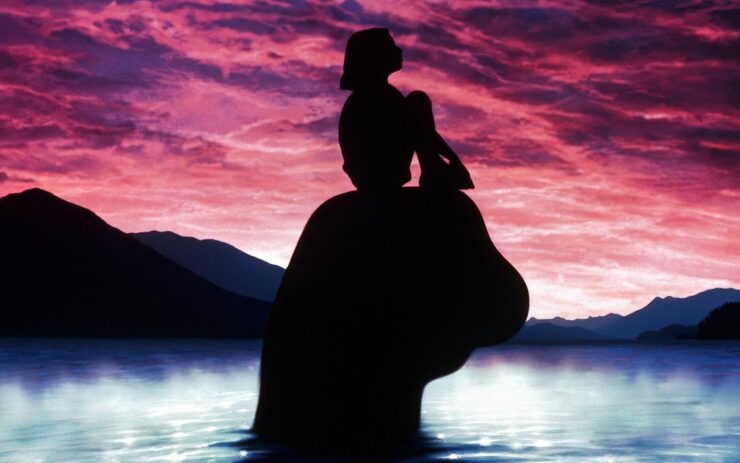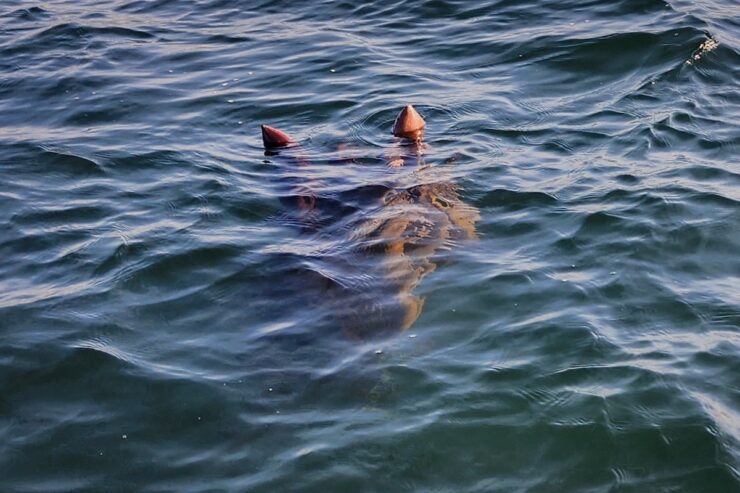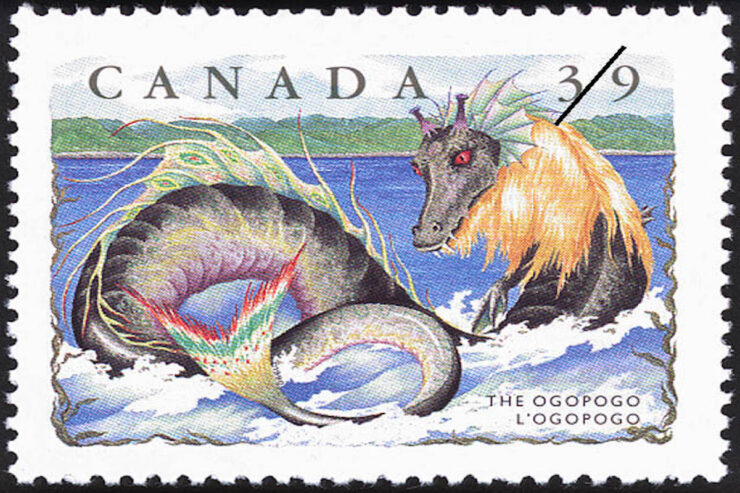Dreams didn’t make us kings. Dragons did. –Daemon Targaryen
I had another article lined up for this week, moving on to a new chapter of the Bestiary, but commenter Susan reminded me of a promise I made in my previous post on House of the Dragon. If the final episodes added anything to what I’d seen before, I would revisit the series.
Susan observed:
I think the insights into dragon thought/emotion/behavior and their interaction with their riders are highly visible and important in episode 10. Something huge definitely happens because of them.
That is eminently true. Therefore, one more time, back to dragons we go.
I backtracked to Episode 8 for context. It was interesting to rewatch Daemon’s foray into the rather strikingly vulva-like cleft in a cliff, presumably at Dragonstone. He enters the cavern and extricates a dragon egg, inspects it and apparently approves it. Next we see him addressing two grubby, poorly dressed, but visibly confident people.
These are the Dragon Keepers, the dragon equivalent of stablehands. We’ve seen them in the Dragonpits in King’s Landing as well, where they look much more spooked than they do here. Wrangling dragons has to be as dirty as a dirty job gets, with the prospect of being scorched, bitten, clawed, or eaten at some point in every day’s work.
Daemon reports to the Dragon Keepers that Syrax, Rhaenyra’s dragon, has laid three eggs. What this means, we don’t find out in this episode, though have a feeling we will later. For the moment, we quickly discover that Rhaenyra herself is a pregnant, a pregnancy that will end in an all too Westerosi way after the death of Viserys.
The next dragon encounter builds up through Episode 9. Rhaenyra and her family are back in Dragonstone when the king dies, but Rhaenys is in King’s Landing, and finds herself a prisoner. She dedicates herself to finding a way to get out of the castle, retrieve her dragon, Meleys, and escape.
This is Rhaenys’ chance to be absolutely badass. She and her dragon crash the party at Aegon’s coronation. The scene suffers from an acute case of Cool Beans Syndrome—going for splashy effect over plot consistency or simple logic. All she has to do is torch the whole Hightower faction and it’s over. No fight over the throne. No Dance of the Dragons.
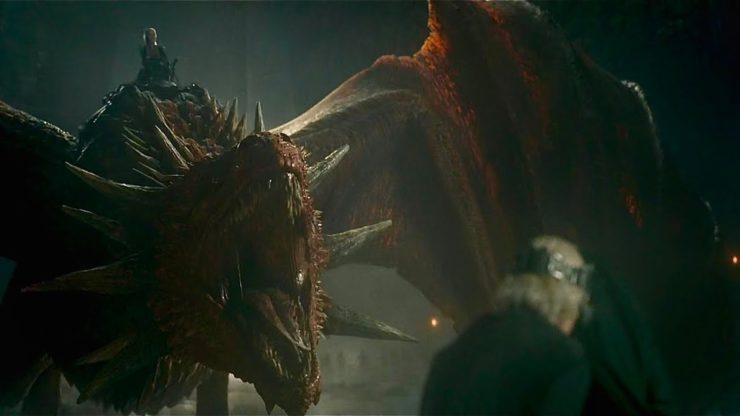
Which, with plot firmly in the driver’s seat (or the dragon saddle), is why Meleys just blows their hair back and flies away. Rhaenys tries to justify her lack of effective action later, which is not not terribly convincing. But yes, it is a very cool scene.
Aside from the wall-smashing and crowd-trampling and dragon-dominating, it shows a bit of the bond between the dragon and the rider. Meleys is thoroughly under Rhaenys’ control (in sharp contrast with the events of Episode 10). But more than that, Rhaenys is not going to leave without her.
Maybe I’m projecting my feelings for my own animals, but I think there’s more to it than not wanting to leave a weapon of mass destruction in unfriendly hands. Rhaenys’ dragon is a part of her. She makes her statement, then gets to work choosing sides in the war that is now inevitable. She flies to Dragonstone to warn Rhaenyra that the Hightowers have stolen her throne.
Buy the Book
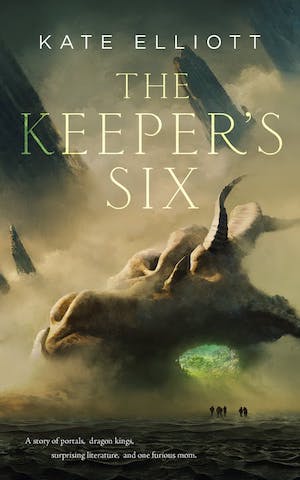

The Keeper’s Six
Episode 10 is a culmination of the dragon lore and behavior we’ve seen in the season. We’ve learned that Targaryen babies sleep with dragons’ eggs in their cradles; that all the royals either have dragons, have had them, or intend to get them. We’ve seen how a Velaryon with a Targaryen mother can commit suicide by dragon. We’ve watched dragons of all ages and sizes, and seen how a rider claims their dragon—and how a dragonless Targaryen is treated by the rest of their siblings and cousins.
There’s no little amount of bullying among the younger royals. One such incident ends in the loss of an eye. This will have repercussions throughout the rest of the series, and come to a head in the finale of this season.
Before the worst blow falls, we’re treated to a strange, and strangely beautiful scene. Prince Daemon enters an underground structure of some sort, a crypt or a dungeon. As he walks with torch in hand, he sings in Old Valyrian.
At the end of the scene, we see what he’s singing to. It’s a huge, flaming dragon. Aegon never misses a beat. He stands still while the dragon finishes expressing its opinion. Then their eyes meet.
This, like the scene with the egg, seems to be a pointer toward a later season. There’s no explanation here, and no one talks about it before or after. It just happens.
Apparently the dragon he addresses is a wild dragon. It’s not Daemon’s dragon, but as he stands eye to huge glowing dragon eye, we see the dragon’s fire in his own eye. This is dragon magic, Targaryen magic, and it’s the clearest example we’ve seen in the series.
No one else so far shows the level of communion with dragons that Daemon does. Aemond steals the huge dragon Vhagar from Daemon’s daughter, who should have claimed her after Daemon’s wife Laena dies, and it’s clear he forges a mental bond with her. But Daemon seems to be involved in breeding dragons, and he appears to have greater powers over them that we see in the rest of the family.
In light of what happens at the end of episode 10, I’m convinced that Daemon has a lot in common with dragons. He has deep feelings; he cares for Rhaenyra, and he has at least some sort of functional relationship with Laena. He loves his brother Viserys, grieves over the king’s steep final decline, and despite the strain of being forever the second son, he ends up being more loyal than not. But he’s also reckless, heedless, and not infrequently cruel. He murders his first wife. He comes close to strangling Rhaenyra in a fit of rage.

The Dance of the Dragons starts as a vicious prank, a round of bullying: Aemond is just barely prevented from attacking Luke in Lord Baratheon’s hall, then takes off after his little dragon Arrax on the much, much larger Vhagar. It does look as if he’s not trying to kill his cousin; he wants to scare him, and maybe hurt him a little, but not take it further.
Then the dragons take control. From the moment Luke mounts Arrax after he’s thrown out of the hall, he rather desperately tries to make Arrax listen and obey. Arrax is fractious and maybe afraid of Vhagar.
Aemond, for his part, seems fairly in accord with his dragon, until Arrax loses it and flames her. Vhagar doesn’t seem to be hurt, but she is infuriated. In spite of Aemond’s efforts to stop her, she rips the little dragon and their rider to pieces.
Aemond is visibly appalled. Up to this point, as far as we’ve seen, Vhagar has been a loyal servant. Once claimed, she does his bidding. This time of all times, her obedience fails. She reverts to her wild, predator self.
That’s remarkably similar to Daemon: loyal servant of the crown one moment, murderous rebel the next. I suspect Aemond will go in that direction as the series continues. He’s already been set up as Not A Nice Person, with his black clothes and his dramatic eye patch and his unrelenting hatred of Luke. Now that his dragon has taken final revenge on the person who robbed him of his eye, I don’t see how he can avoid the downward spiral.
The finale brings home the connection between Targaryens and their dragons. It’s not an easy or a simple relationship. Dragons are terrifying. Targaryens don’t appear to be afraid of them, or do their best not to show it, but they have a healthy respect for the power dragons can bring to bear. They’re more than just weapons. They’re sentient. And sometimes they take matters into their own claws.
Judith Tarr is a lifelong horse person. She supports her habit by writing works of fantasy and science fiction as well as historical novels, many of which have been published as ebooks. She’s written a primer for writers who want to write about horses: Writing Horses: The Fine Art of Getting It Right. She lives near Tucson, Arizona with a herd of Lipizzans, a clowder of cats, and a blue-eyed dog.










